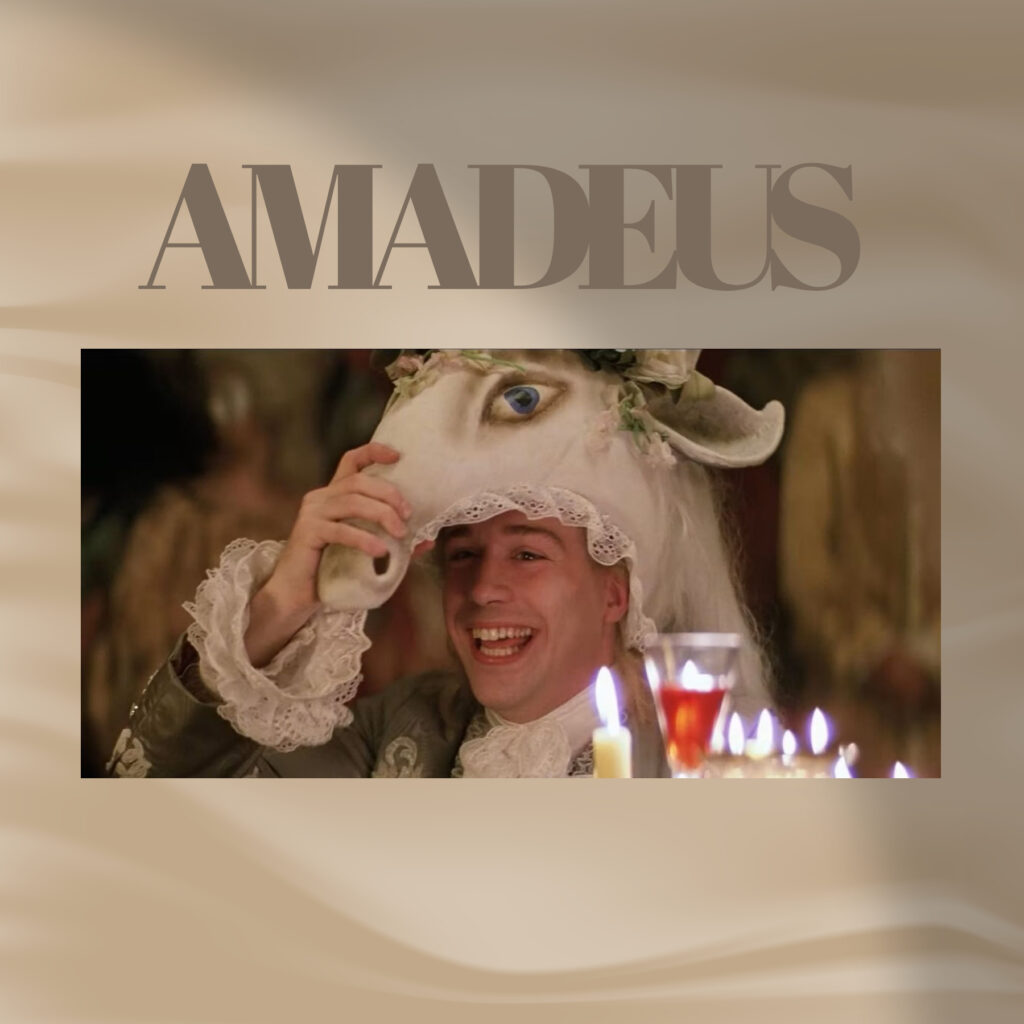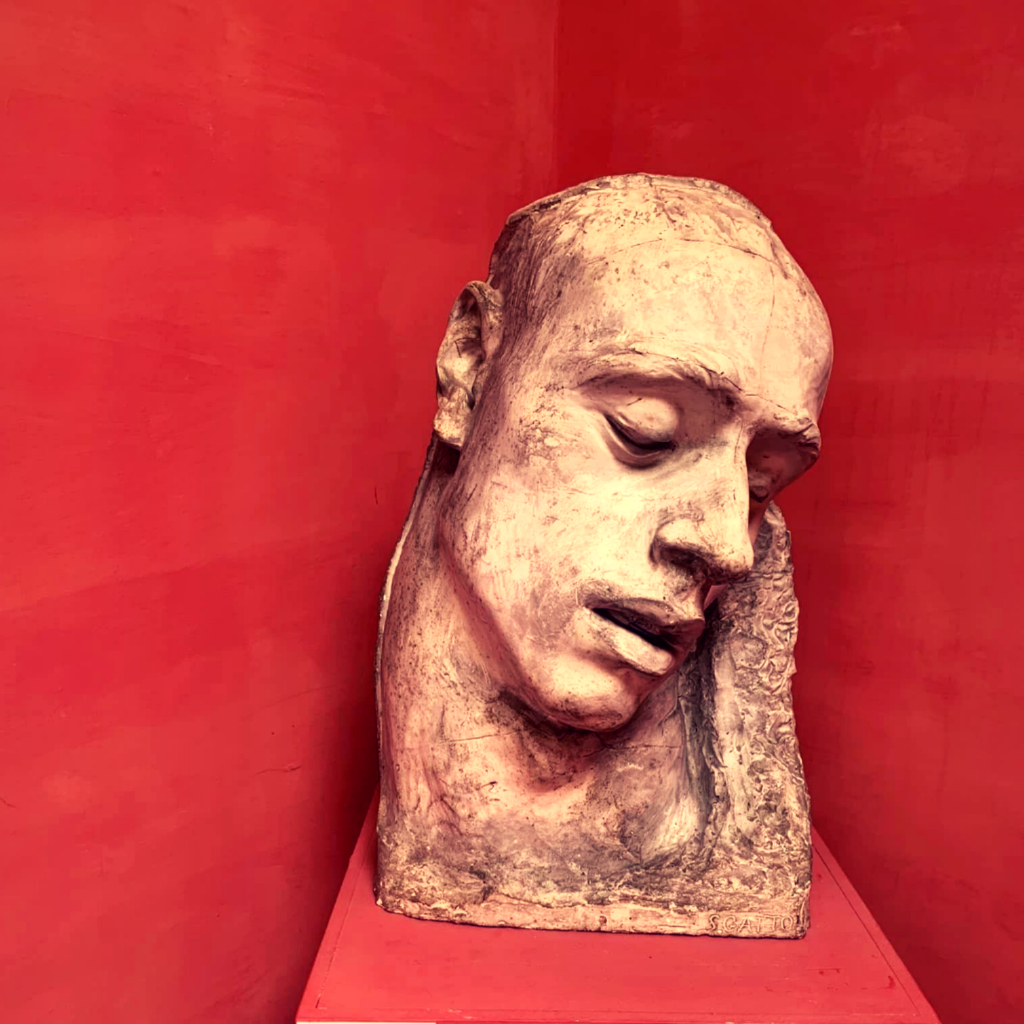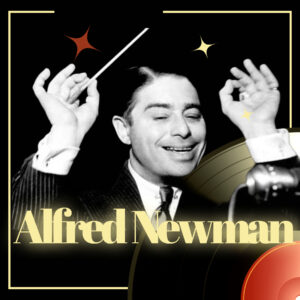
It was 1791. Antonio Salieri became a successful court composer during the reign of Emperor Joseph II. Salieri is appalled to discover that the divine musical gift he desires to possess has been released to an obscene and mischievous jester when Mozart arrives at court. Blinded by envy, he plots to annihilate Mozart…
Forman “Amadeus”‘s establishment magically involves us in the psychological tangle of the relationship between genius and a successful professional, who is not gifted. Based on one of the most popular stage-plays and winner of multiple Academy Awards, Amadeus is one of the most successful and beloved films of all time. The process of creation and the life of the legendary cinema is also engrossed with sparkling talent, humor, and the unforgettable musical magic.
22 facts about “Amadeus”
- Milos Forman and Peter Schaffer spent four months adapting a very stylized play into a working script. They added characters such as a priest, servant, archbishop, and mother-in-law. Wolfgang Amadeus Mozart’s character was expanded beyond Antonio Salieri’s perception, and Salieri’s monologues were redesigned visually.
- Neville Marriner had less than an hour to devote himself to the project, as he was in between connecting flights to New York when he met Milos Forman and Saul Zaentz. The Marriner agreed to do so on the condition that no notes of Wolfgang Amadeus Mozart’s music be altered.
- It has been argued that the concept of Wolfgang Amadeus Mozart’s strange laughter was taken from “references in letters written about him by two women who met him” who describe him as laughing in “infectious dizziness” which sounds like “metal scratching glass”. However, there were no quotes for these letters. There’s no indication of who wrote them, who or when. And in the absence of further quotations, these assertions of historical evidence of Mozart’s laughter should at best be considered questionable. Robert L. Marshall, writing in “The Musical Quarterly, Vol.18 / 2, 1997, p.177, says that laughter is a dramatic technique representing the mocking laughter of the gods, as Salieri claims in the script.
- Elizabeth Berridge, during the scene of “Venus Nipples”, did not know that she could spit out the candy (which was really pieces of marzipan) between the takes and ate about 15 whole pieces. She later describes how she thought they were disgusting and that she eventually became ill.
- F. Murray Abraham sat in a dressing room for an average of four and a half hours every day when he played in Salieri’s old age.
- The soundtrack ranked 56th on the Billboard album charts, making it one of the most successful classical albums of all time.
- A piece of music by Wolfgang Amadeus Mozart with themes of oboe and clarinet, whose composition Salieri so deeply admires in early scenes, is Adagio, or the third part of Serenade 10 in B-flat, KV361, also known as the “Grand Partita”.
- Throughout the film, all German (even those in operas) is translated into English. All Italian remained as Italian. This was done to help viewers better immerse themselves in the classical era of Austria.
- Tom Hulce only knew how to play the guitar before shooting. Milos Forman said they could trick him, but it would be good if he learned to play the piano. For six months, Hulce learned to play the piano and every Mozart symphony in the film.
- According to Milos Forman’s autobiography, one studio offered to fund the film on the condition that Forman chose Walter Matthau (Mozart’s enthusiast) to play Wolfgang Amadeus Mozart. Forman declined the offer, believing that Matthau was too old for the role, as he was over 60 years old and Mozart lived to be 35.
- The scene “Don Juan” was partially filmed on July 4. In one take, at the call of Milos Forman “Action”, a large American flag was unfolded from the ceiling. 500 extras stood up and sang “The Star-Spangled Banner”. The only statisticians who did not get up were about thirty people scattered throughout the theater – at first they were considered normal people, but it was found that these thirty were members of the Czechoslovak secret police.
- F. Murray Abraham was originally looking for a small role for Rosenberg. During one audition, Milos Forman asked him to read part of the old Salieri. His reading was so good that Forman already knew that he was playing the lead, but deliberately didn’t say “you got the part” because Forman knew that he would base his work on Scarface (1983). So he deliberately waited until he had almost finished all his scenes. A few days later, Forman asked Abraham to do the same for a few more auditions, but his refusal eventually convinced Forman to cast him because he felt that Abraham “could be a great actor if there were no breaks between them.
- Peter Schaffer cried when he first visited the Prague Opera House, knowing that Wolfgang Amadeus Mozart was performing there.
- Since the film was not funded by a major studio, Orion Pictures promoted the film through a music video featuring David Lee Roth and excerpts from the film by Bruce Springsteen, Van Halen, KISS, Michael Jackson, David Bowie, and Madonna, who danced with the Mozart Symphony 25 G minor.
- The musicians play an instrument that was the forerunner of the modern piano, in which the title combines the Italian words “forte” and “piano”. This is because it was the first keyboard tool developed that could actually provide a contrast between loud and silent sounds, depending on how the keys are pressed by your fingers. Its popularity among the emerging European middle class is demonstrated in the director’s stage, where a wealthy family has their daughter taking a lesson from Mozart. Mozart’s real piano sonatas were written for his students. It quickly outperformed the harpsichord and keyboards as a household musical instrument, as well as a major concert instrument. The classical era (about 1750-1820) put an end to the use of harpsichord in almost all compositions, and the piano and violin became the main instruments of concerts for the solo instrument and orchestra. Also in this era, the concert genre was no longer written for the orchestra without a solo instrument; this form of concert was replaced by a symphony. The piano fort had black keys where the modern piano (fully named piano) has white keys, and white keys where the modern instrument has black. In one scene, where Mr and Mrs Mozart are going to a concert where Mozart is to play, six people are raising a piano on their shoulders through the streets of Vienna. The earlier instrument was smaller than the modern piano (with a shorter keyboard) and much easier. It was also much shorter than its modern counterpart. Beethoven is a composer who is credited with helping to develop a more durable instrument with a wider pitch range, leading to the need to rename the instrument.
- Tom Hulce and F. Murray Abraham had a deliberately distant work relationship while making the film, much like their heroes.
- Baron van Swieten (played by Jonathan Moore) has a relationship with Dracula. He was the son of Gerhard van Swieten, appointed by Empress Maria Theresa to quell the vampire hysteria that gripped Austrian society and especially the armed forces. As an imperial “vampire hunter”, the older van Sweeten was the inspiration for Bram Stoker for Abraham Van Helsing’s character in “Dracula”.
- Although there are dubious historical reports that the real Mozart made an unpleasant laugh, Tom Hulse caused a laugh after Milos Forman asked him to come up with “something extreme”. “I could never make that sound except in front of the camera,” said Hulse later. “When we did the loop nine months later, I couldn’t find the laughter. I had to raid the producer’s private bar and drink whiskey to break in.”
- The film was shot without light bulbs or other modern lighting devices.
- The filmmakers often used music with lyrics. In one case, Mozart’s coffin is thrown out of the church and into the grave of a beggar. The music is Lacrimosa from the Mozart Requiem Mass as the choir sings “Lacrimosa dies illa, / Qua resurget ex favilla / Judicandus homo reus. / Huic ergo parce, Deus: / Pie Jesu Domine: / Dona eis Requiem. Amen.”
- An important theme of the film is the change of Salieri’s faith in God. This may be the reason for the name Amadeus, which means “love for God”.
- Included in the “1,001 films you need to see before you die” edited by Stephen Schneider.
Amadeus (1984)
Director: Miloš Forman



